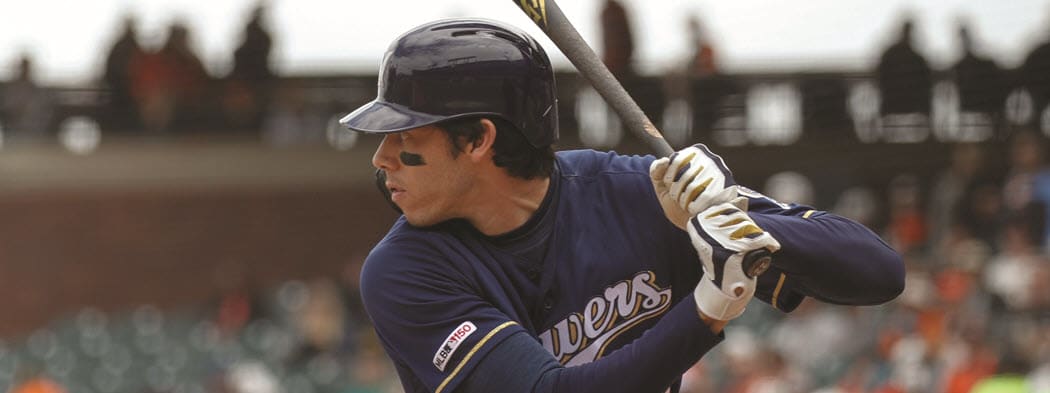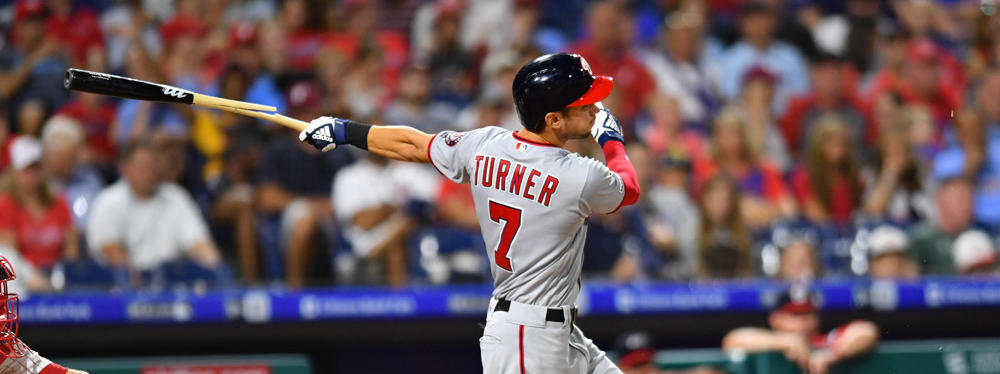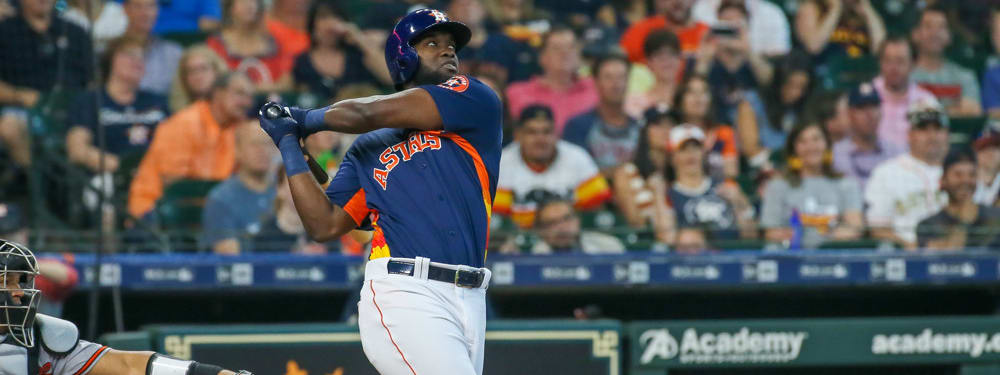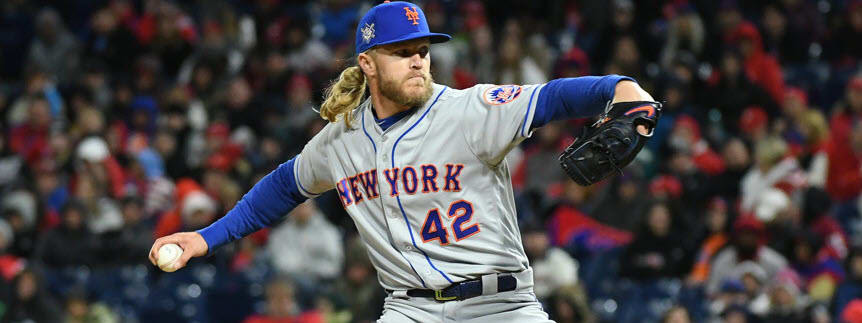Recent RotoWire Articles Featuring Kendrys Morales
See More
Given the recent power explosion in baseball, it's not clear that there would be much of a role in the league for the good version of Morales, who was a defensively-limited player with a good but far from elite bat for the bulk of his career. The current, 36-year-old version is considerably further from relevance. In 53 games for the Blue Jays and Yankees last season, he slumped to a quite poor .194/.313/.253 slash line, numbers which wouldn't even play for a backup catcher. He did at least walk at a career-best 12.9% clip, and Statcast suggested that he deserved a decent .445 slugging percentage, so there could be at least a little hope for a bounceback season in 2020. There's little reason to be very excited, though, as even during his comparatively stronger 2017 and 2018 campaigns he managed a modest .249/.318/.442 slash line, hardly enough to turn heads at first base or designated hitter.
Morales limped to a .146/.239/.260 slash line in his first 30 contests. On May 19, he ditched glasses he started wearing in spring training due to right eye issues and hit .305/.380/.546 with 16 homers through Aug. 26, the last day of a seven-game homer streak that fell one short of tying the MLB record. Per Statcast, his .329 wOBA finished 46 points below his xwOBA -- the second-unluckiest finish in the league (min. 450 PA) -- and he had the biggest differential between SLG and xSLG (-.084). While he could probably creep back toward 30 home runs with regular playing time, the at-bats are unlikely to be there. The 35-year-old figures to receive frequent off days for maintenance and to make room in the lineup for younger players. On the bright side, the longtime UTIL-only player might qualify at first base in your fantasy league this season (18 games).
Exhibit A in the depreciation of the home run: Kendrys Morales. Although he hit 28 long balls, Morales ended up grading out as a slightly below-average real-life hitter last season (97 wRC+). His strikeout and walk rates both went in the wrong direction -- he posted a middling 7.1 percent walk rate and 21.7 percent strikeout rate -- and Morales grounded into 20-plus double plays for a third straight season. He did turn in a top-30 hard-hit rate among qualifiers and continued to crush lefties, but Morales' numbers against right-handed pitching were downright bad (.216/.280/.400). Even so, Morales should continue to play close to every day in 2018, and that playing time affords him the opportunity to compile useful counting totals in the fantasy game. The problem is that those numbers are not quite as valuable in today's offensive environment, and of course, taking him means plugging up the UTIL spot relatively early.
Morales reached the 30-homer mark for the second time in his career, last accomplishing the feat in 2009. His doubles total, however, dropped precipitously, suggesting the designated hitter benefitted from the mystery causing baseballs to leave the yard at a record pace last season. The rest of Morales' skills were in line with his career levels, save for the increase in HR/FB% responsible for the power surge. Unfortunately for Morales, despite the added homers, his runs and RBI were tempered as his teammates collectively struggled. Morales, who will turn 34 near midseason, has amassed over 600 plate appearances in three of the past four seasons. As a switch hitter with stable skill set, there's no reason to be wary of a fall-off. He'll no doubt come at a discount because he's only eligible at a utility spot, again yielding a positive return on investment for those willing to sacrifice roster flexibility. With a move to Toronto as a free agent this offseason, Morales could tack on 20 to 30 combined runs and RBI with relative ease, and the more favorable home park significantly improves his chances of approaching 30 home runs again.
Morales was punished in 2014 with a qualifying offer, so he had to wait awhile to sign with a team and his numbers suffered. He pounced on a winter offer from Kansas City this time last year and had a resurgence as the key cog in the middle of that lineup. Everything he did was something he had done before, but it had been since 2008 that we saw all of it happen at once. Morales drove in 106 runs while hitting mostly in the fifth spot of the lineup because he became a man possessed at the dish when he had runners on base. Morales hit .326/.399/.558 with anyone on base compared to a more modest .256/.325/.416 line with the bases empty. While Morales has typically hit well with runners on, last year was well above his career norm and is bound to regress a bit in 2016. That said, he’s David Ortiz-lite (statistically).
Morales rejected the Mariners' qualifying offer last offseason and then sat out the first two months of the season when he could not find an acceptable deal. He finally signed with the Twins, only to be traded back to the Mariners in late July. The reunion did not go so well, though, as Morales hit just .207 with seven home runs in 59 games with the Mariners, primarily as the designated hitter. His walk, strikeout and contact rates stayed close to the previous year, but his batting average was undoubtedly impacted by a .247 BABIP after it was up at .310 in 2013. The Mariners could have lived with a low batting average, but they needed more than a .347 SLG and a .632 OPS. Morales said after the season that he wanted to return to Seattle, but the Mariners wouldn't give him a multi-year deal, so he ended up signing with the AL champion Royals to fill the void at DH left by the departure of Billy Butler.
The Mariners made a smart deal (one of their few) to unload the overrated Jason Vargas to the Angels for Morales last offseason. Another year removed from that gruesome broken leg in 2010, Morales reduced his strikeouts last season, increased his walks and improved his contact rate in a career-high 156 games. He largely flew under the fantasy radar last despite hitting .270 with 23 home runs and actually hit better at Safeco Field than on the road. Although he played 31 games at first base last season, he brings no defensive value, leaving him with only a handful of American Leagues teams to court as a free-agent DH. As a result, it would not surprise if he ended up with Seattle again. Morales might not provide the kind of power production that he delivered a few seasons back with the Angels, but he could still be a viable fantasy option if he stays healthy.
Morales finally made it back onto the field in 2012 after missing nearly two full years with a broken leg. The results were disappointing if you expected a return to his pre-injury production, but he stayed healthy all season and a .273/.320/.467 batting line with 22 homers is pretty impressive given Morales' extended absence from the game. As expected, he got better as the season went on, hitting 14 of his 22 homers after the All-Star break while drawing a few more walks and striking out at about the same rate. Morales is far better from the left side of the plate than the right side, which means he's likely to sit against left-handed starters, but he could approach 500 at-bats again if he's able to stay healthy. Given that his power improved late in the 2012 season, there is some reason to believe that Morales can get back to something close to his pre-injury levels. The Mariners acquired him for Jason Vargas in December, and it is likely that Morales will serve as the team's primary first baseman in 2013.
Just two seasons ago Morales was a budding star and the Angels' first baseman of the future. However, he broke his ankle May 29, 2010, and has not appeared in a game since. Mark Trumbo has established himself as a major leaguer, and Albert Pujols is now the Angels' first baseman for the next decade. That leaves Morales without a position. He is still recovering from the ankle injury two years later and it's not clear if he'll be ready for spring training. Still, even if he is able to take the field, his health and the Angels' crowded first-base situation have put a damper on his fantasy value.
After a big 2009 season, Morales was expected to help carry the offense again a year ago. He did so early on, but following a walk-off grand slam in late May, Morales broke his leg during the celebration at home plate and was lost for the season. The Angels really felt his absence while they struggled to score runs on a consistent basis the rest of the way. Now several months removed from the injury, Morales has made good progress and is expected to be ready for spring training. He is capable of a .300 batting average, 30 home runs, and 100 RBI if he plays the whole season, so don't be the owner to forget about him during your draft.
In Morales' defense, the Angels had never just run him out there every day, so maybe he could have done this all along. The power will have to carry him, as his approach at the plate will eat into his batting average and OBP barring a change, and he may bat with fewer runners on in 2010, so the RBI opportunities will fall.
Morales saw action in only 27 games with the Angels in 2008, but batted .341 and knocked in 74 runs with Triple-A Salt Lake. Morales is a switch-hitter who can cover both sides of the plate and he should only get better with more major league experience. The Angels plan to start Morales at first base this season after losing Mark Teixeira via free agency, but they could find a replacement through a trade and put Morales back in an outfield/designated hitter role. Either way, look for Morales to get a significant increase in playing time in 2009.
After hitting .341 at Triple-A Salt Lake last season, the Angels called up Morales in late August while some of their regulars were down with injuries. Morales responded by giving the Angels a preview of the future and immediately went on a 12-game hitting streak. He is a switch-hitter with above-average power from both sides and has shown that he can hit for average as well. The key to his value becomes playing time, as he's blocked by Casey Kotchman at first base, and the Angels have a significant investment in getting Gary Matthews Jr. everyday at-bats, even after the addtion of Torii Hunter this winter. You'll want to keep an eye on how this playing time situation breaks down heading towards the season, as Morales should put up some impressive offensive numbers if he's given opportunities to play.
The Cuban defector was a victim of Kotchman's ill bat and body, called up likely before he was ready as a replacement. Take his major-league performance last year with a grain of salt, noting the positives--reasonable contact rate and K/BB--and excusing the poor performance otherwise. He might be squeezed in March and April, but will be up for good later in the year.
The Angels have Morales penciled in as their primary DH for 2007; until then, he'll have to wait for an injury to Garret Anderson or another Angels' outfielder. He has very nice upside and should produce solid numbers after adjusting to life in America playing for Double-A Arkansas in 2005. Morales defected from Cuba, where he was widely considered the best young player on the Cuban team.
After defecting from Cuba in June and establishing permanent residence in the Dominican Republic (so as to avoid the draft), Morales became a highly-coveted outfield/first base prospect this past summer. Morales is a polished switch-hitter, and viewed by many as Cuba's top young player. He is capable of playing at any corner infield or outfield spot, and at 21 (real age, we assume), he's been deemed close to Major League ready. The Angels added Morales to the 40-man roster in December, and it looks like they're planning on giving Morales a shot at winning a big league roster spot come April. Watch his position in the spring, as he might win the starting DH job outright.












